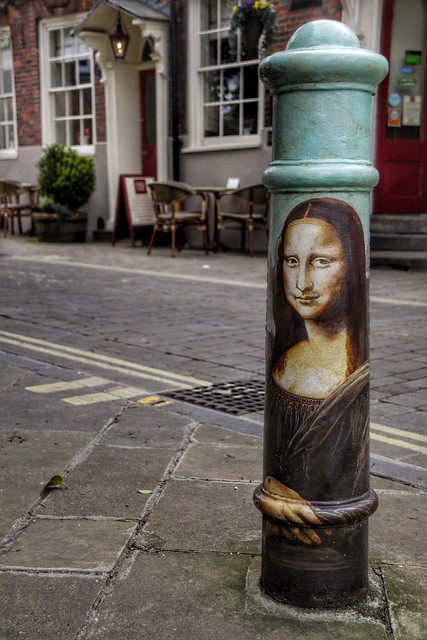Cities in Great Britain often feel eternal, as if they have stood and will stand forever. There's history around every corner and always a jumble of different architecture styles, from Gothic to Neoclassical to modernist. Cities as old as Winchester have plenty of secrets and quirks, so here is our deep dive into the 7 things you may not know about Winchester.
1. What is in a name?
The area around Winchester has been inhabited since Pre-historic times. Though records of the Iron Age settlement remain rather obscure, the first recorded name of the settlement at Winchester is thought to be Wentā or Uentā, a Celtic word for 'meeting place' or 'favoured place'.
Under the Romans, it became Venta Belgarum. This name comes from the Latinised words of the original Celtic 'Wentā' and Belgae, the name of the tribe the settlement belonged to when the Roman's arrived. Under Roman rule, Venta Belgarum was one of the most important settlements in Britain, but when the empire collapsed, it became something of a ghost town until the Anglo-Saxons took over the region.
The name Winchester itself comes from a combination of the Celtic/Roman name and Anglo-Saxon word for a Roman settlement 'caester'. Venta Caester soon became Wintancaester and then Winchester. So what is in a name? Three different historical cultures and a whole load of history.
2. Tudor era graffiti in the cathedral
The oldest graffiti to have been found in Winchester Cathedral apparently dates all the way back to 1545. However, it is rather tough, perhaps impossible even to confirm whether this is actually true, so historians just have to take the sneaky graffiti artist's word for it.
3. The Mona Lisa in Winchester
Well, not exactly, this Mona Lisa is a rather cool copy that has spruced up one of the many plain bollards found in Winchester, but Da Vinci's masterwork isn't the only famous painting to be found in the city. Currently, there are a total of 21 bollards that have been painted in the style of some of the world's most famous artworks in The Square in Winchester. The project came about in 2005 and is still in progress.
Other famous artist's work to keep your eyes peeled for includes Gustav Klimt, Piet Mondrian, Pablo Picasso, Jackson Pollock and René Magritte.
4. The real King Arthur's Round Table?
The Winchester Round table that hangs in Winchester Castle may look like King Arthur’s round table but was actually first built for Edward I in the 13th century as part of a Round Table tournament. As the name suggests, a Round Table was an event inspired by the Legendary King Arthur and would have included jousting and feasting to commemorate either a wedding or a victory in battle.
The table at the time of Edward I was just plain wood, and it wasn’t until Henry VIII commissioned it to be painted that it took its final appearance as the vibrantly coloured imitation of the mythological Round Table complete with an image of King Arthur, inscriptions of the Knights names and a Tudor rose in the middle. This interweaving of imagery links Henry VIII to the valiant Arthur, leading people to believe that the Tudor rose is as eternal as King Arthur's legend, creating a nifty piece of decorative propaganda.
5. England's oldest school
Winchester College is the oldest public school in England and has the longest continuous history of any English school. It was established in 1382 by William of Wykeham, the Bishop of Winchester, to educate poor scholars but later became a private boarding school for fee-paying students.
6. Winchester Cathedral is the longest Cathedral in Europe
While Winchester Cathedral isn't the largest Cathedral in Europe by any means (that feat goes to the impressive Duomo di Milano in Italy), this building has the longest nave (the central part of a church or cathedral) and the longest overall length of a Cathedral in the Gothic architectural style in Europe. No wonder it's so iconic and a must-see for any tourists coming to the city.
7. The city had a 9th-century makeover

In the 9th century, King Alfred the great redesigned the whole city to make it easier to defend from the Vikings. He decided to create a more grid-like layout, which has lasted to this day and crowned the city as his de facto capital.
King Alfred was buried in Hyde Abbey, but his remains have since been lost, but to commemorate how impactful he was on Winchester and the whole country as a whole, a statue was erected in 1899, 1000 years since his passing with the inscription 'Aelfred, To the Founder of the Kingdom and Nation'.
Read more of the best Hampshire content:
18 cottages that will make you want to move to Hampshire
































